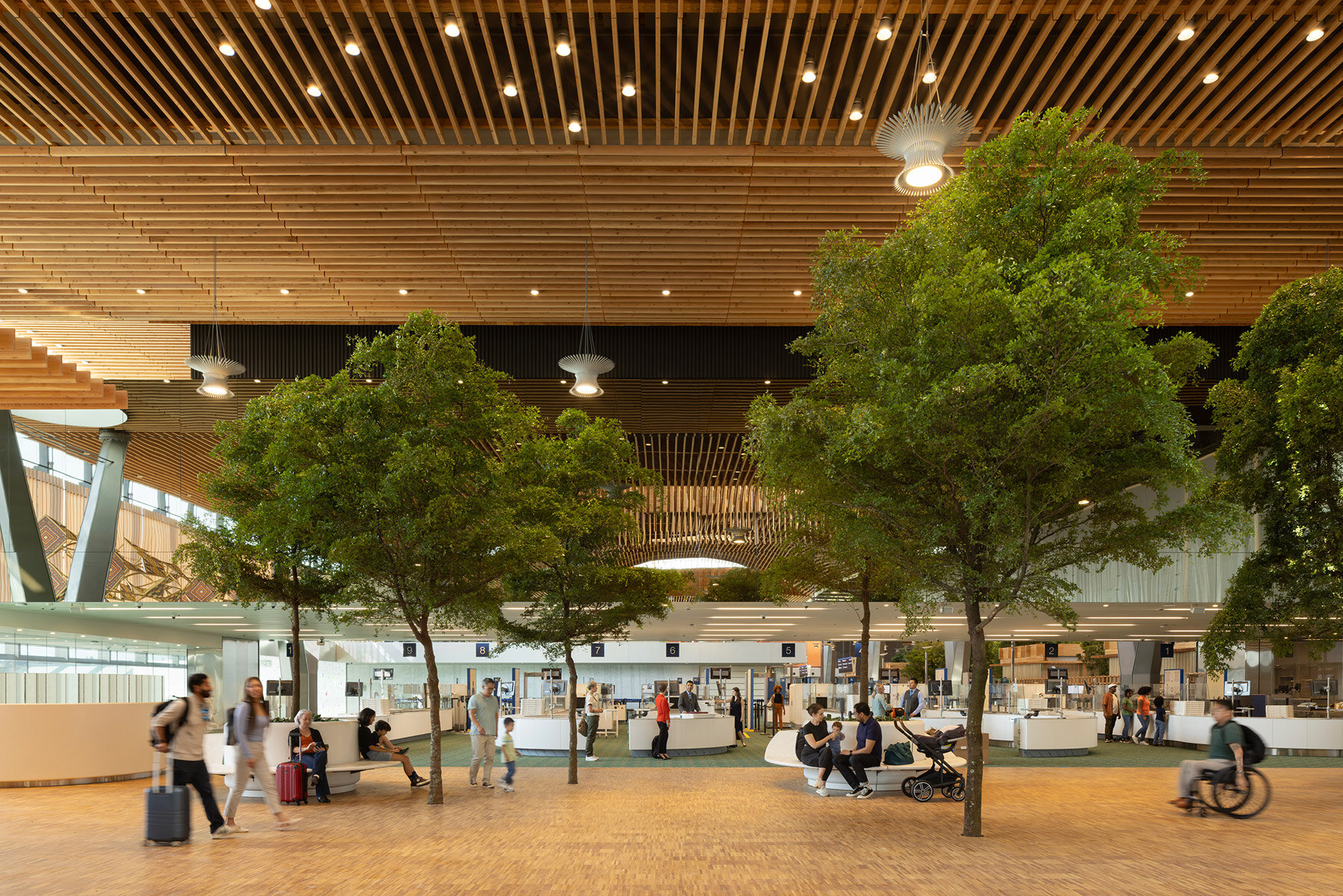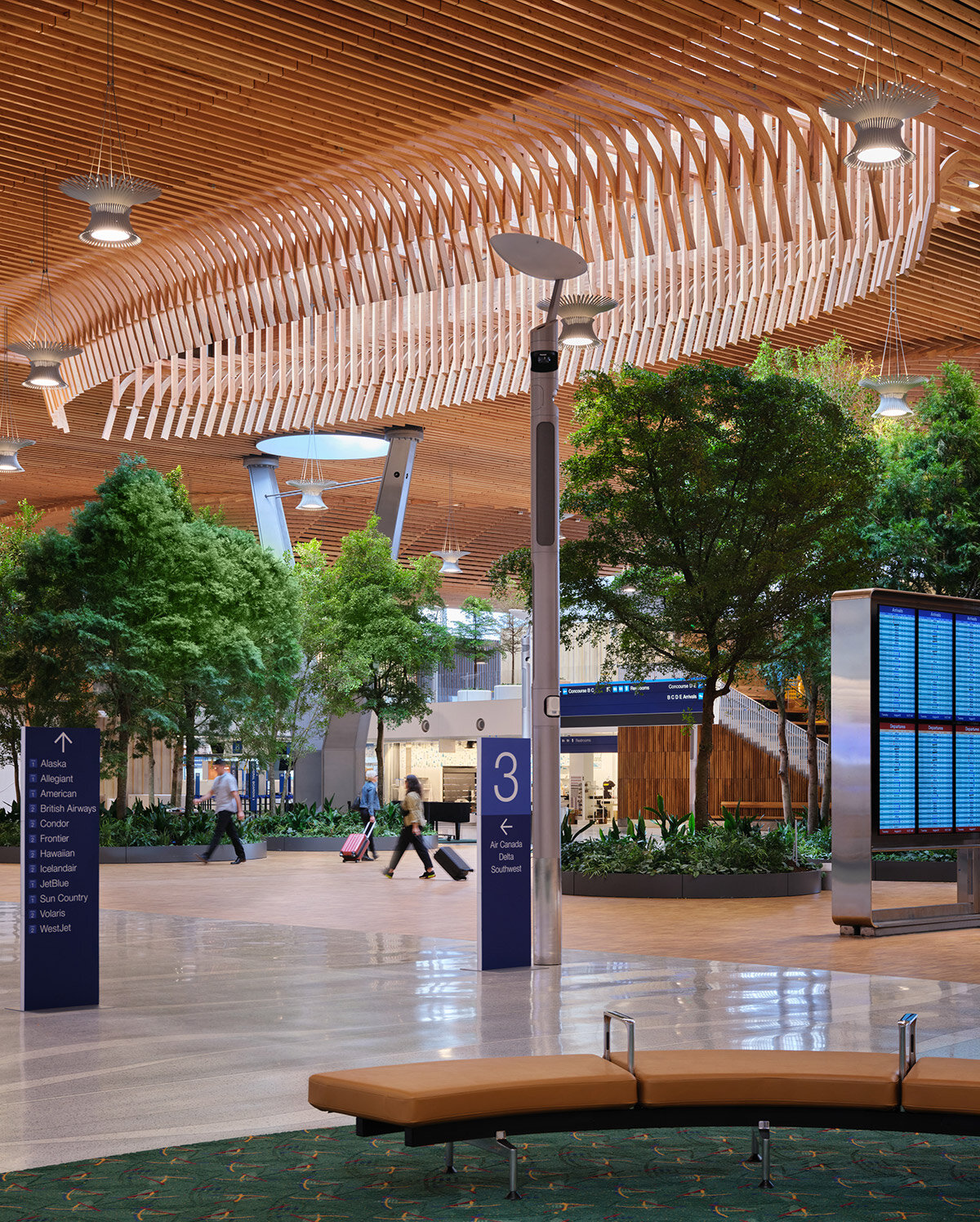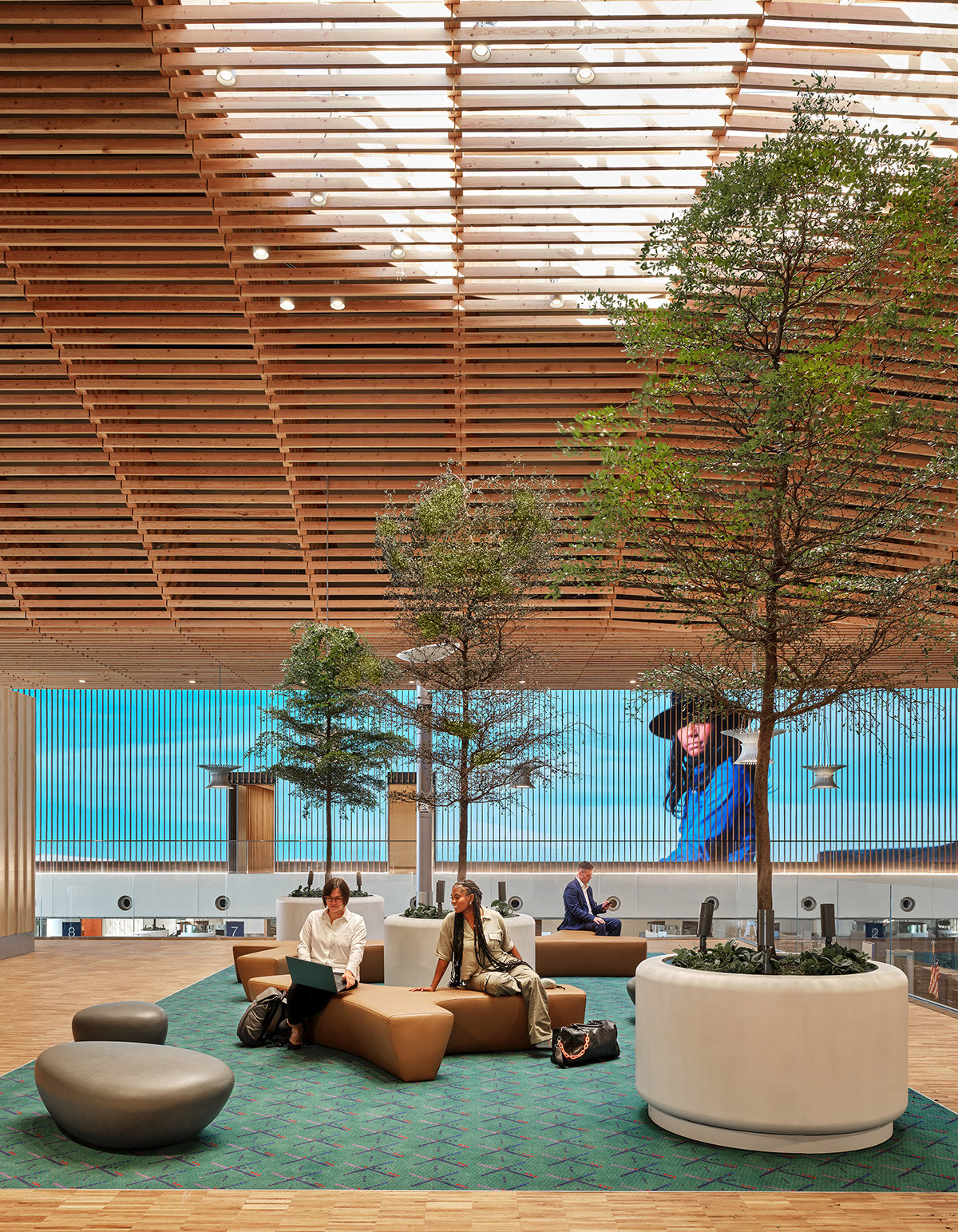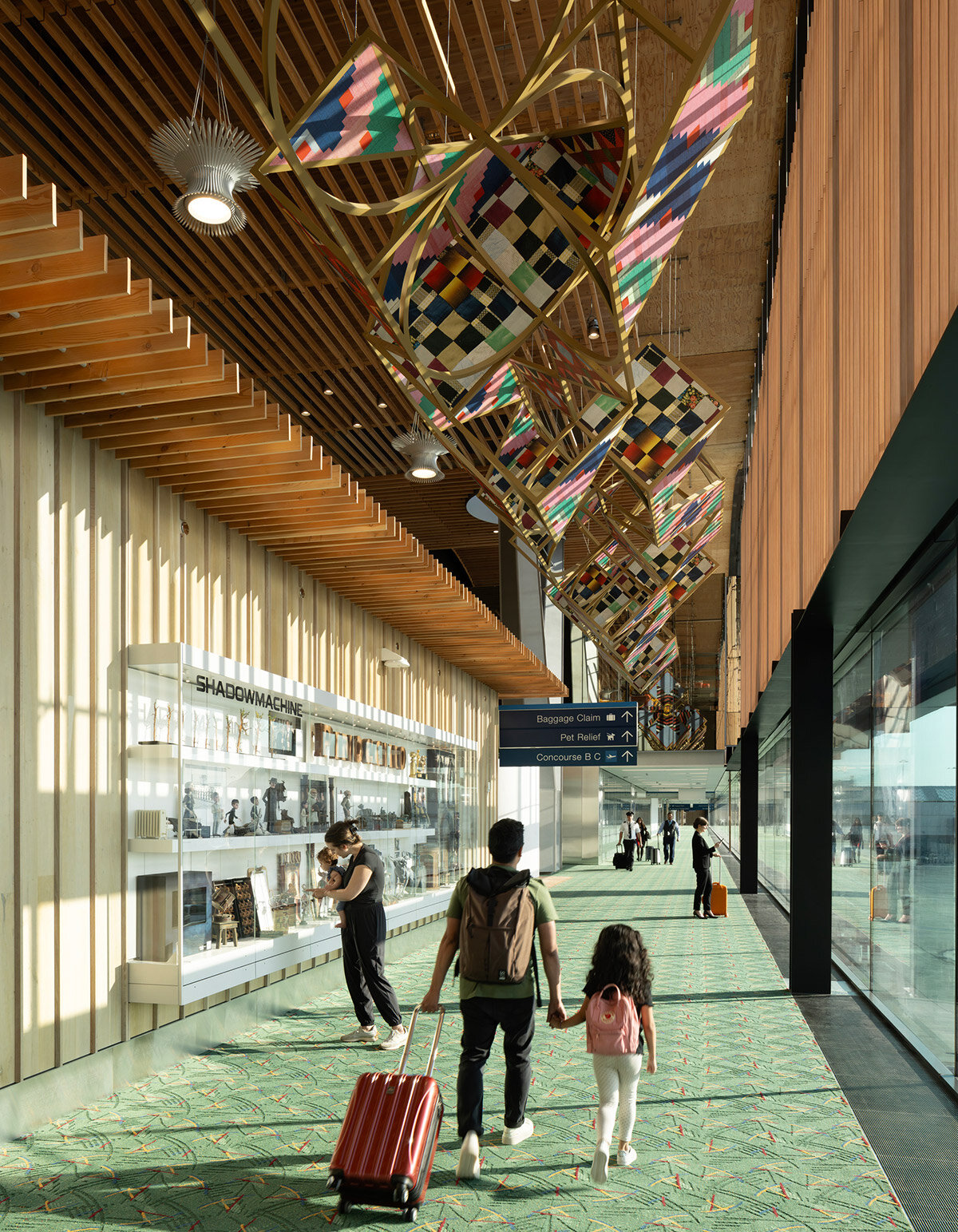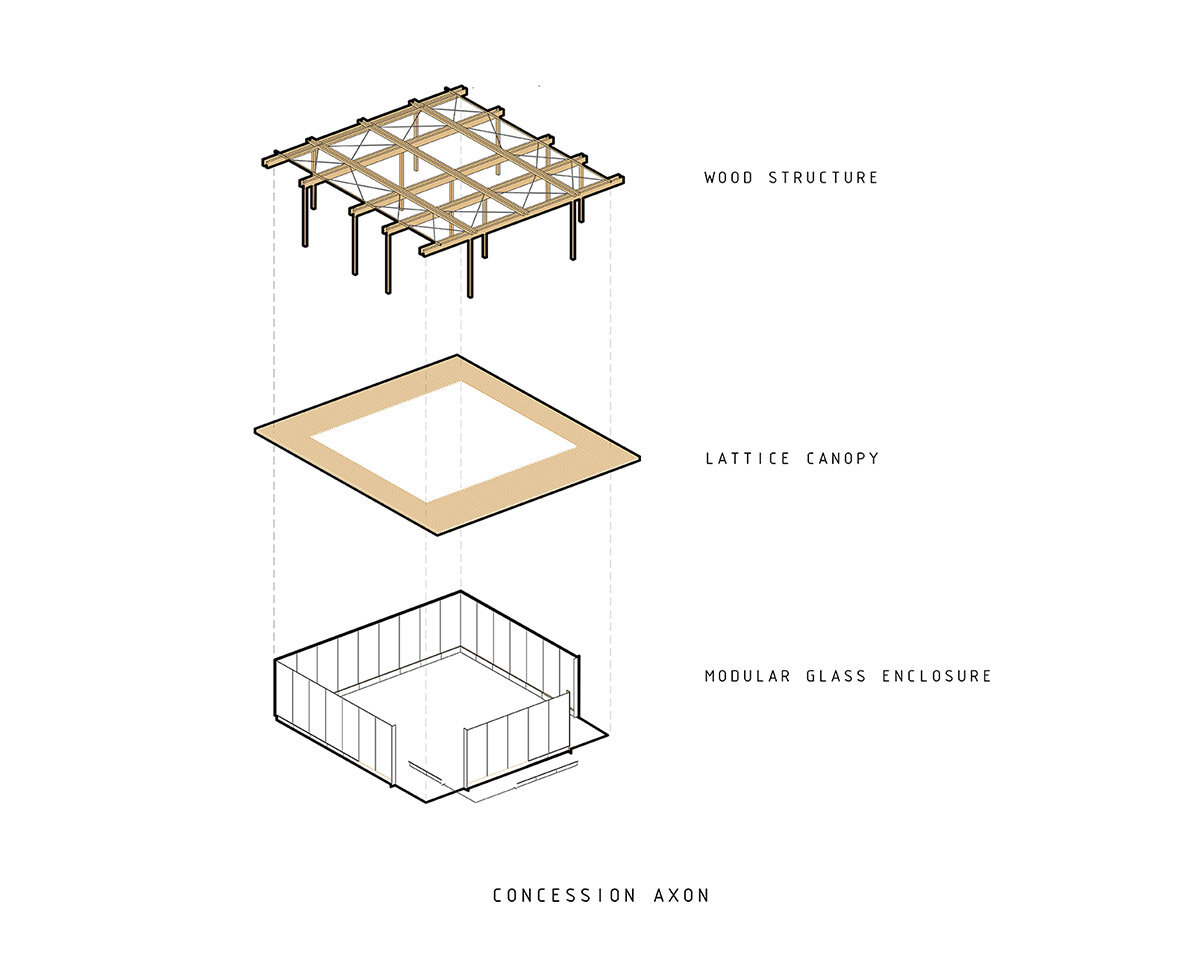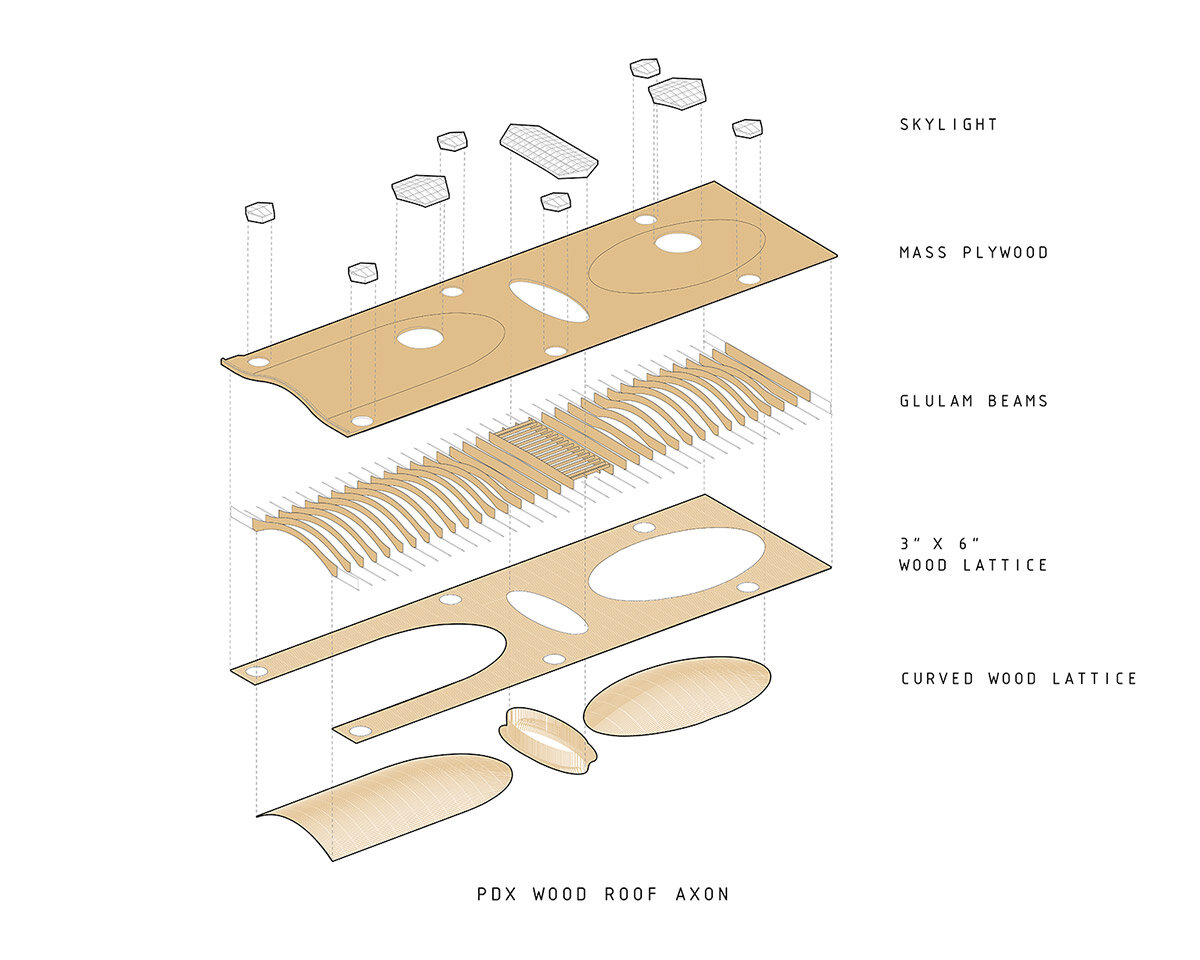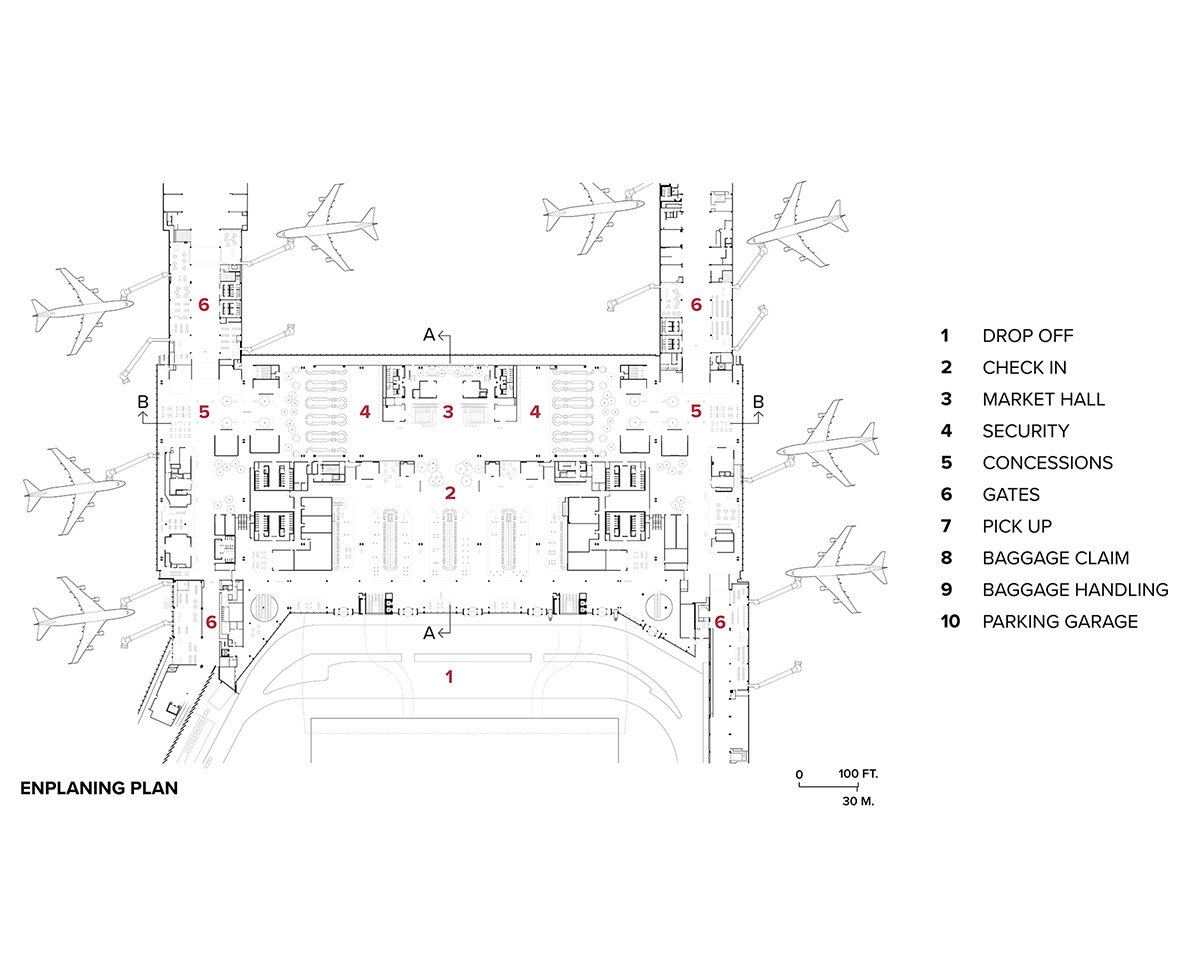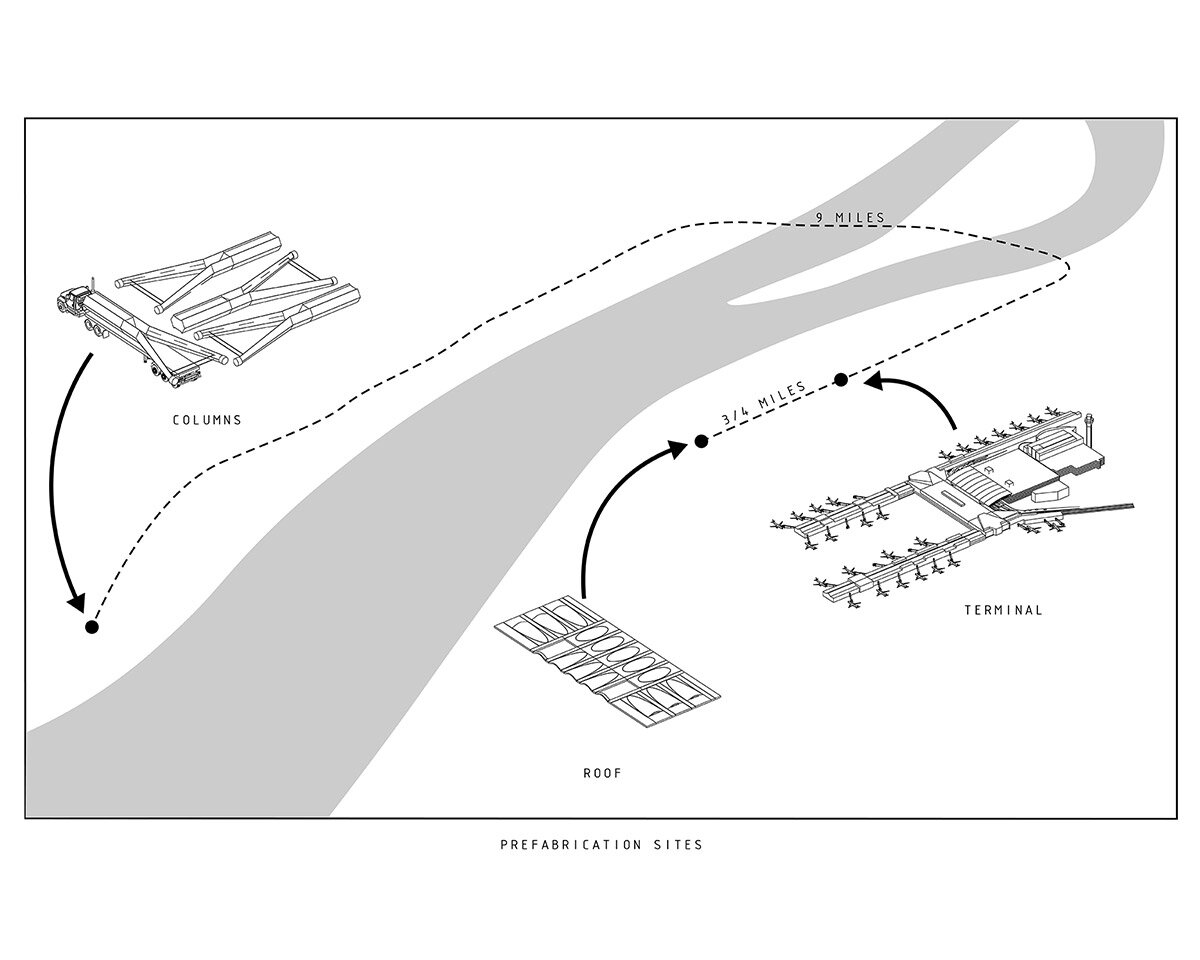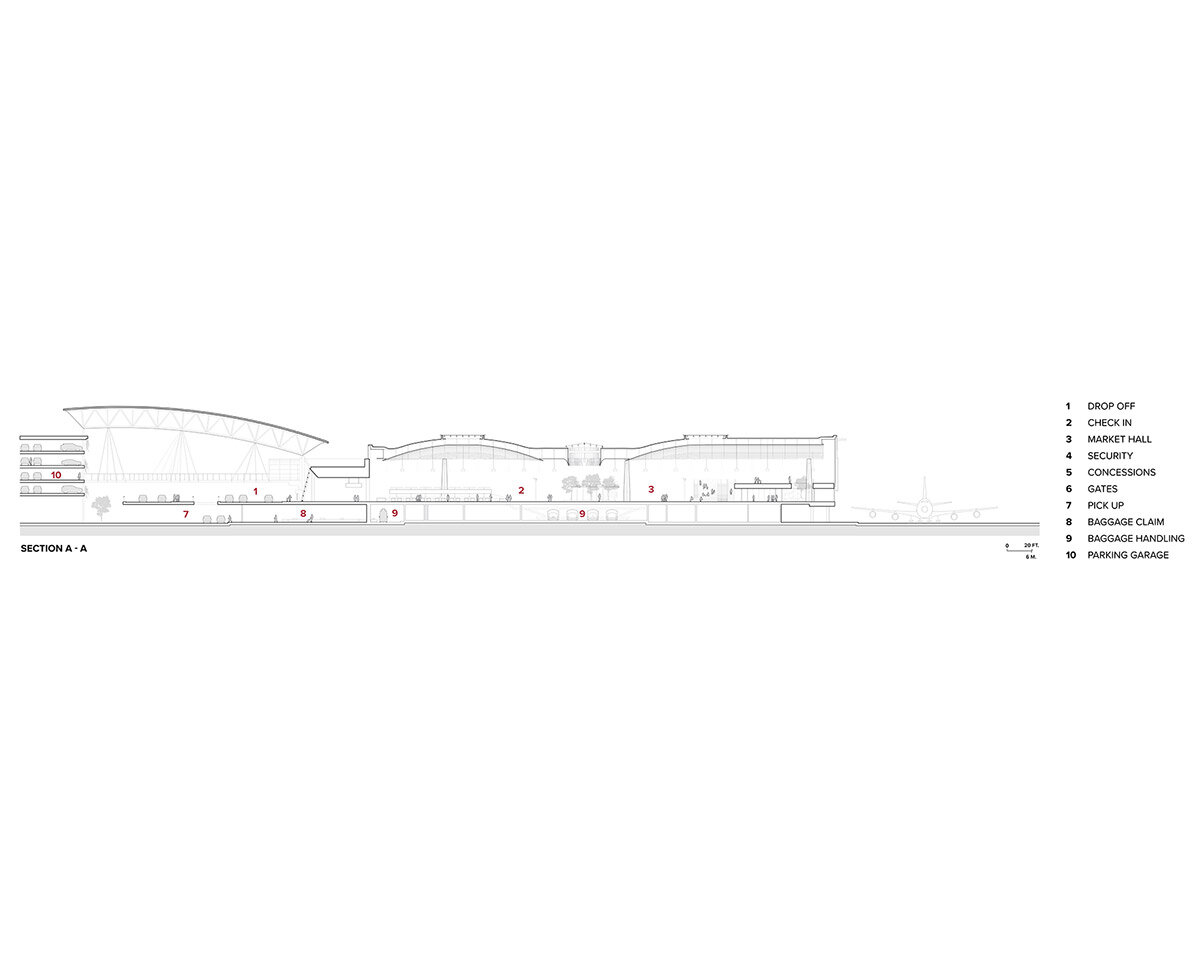The design of the new terminal reflects the natural beauty of the Pacific Northwest. The terminal’s 9-acre mass timber roof evokes the experience of walking through a forest, with expansive views of the airfield and surrounding landscapes. The interior spaces are infused with natural light and greenery, creating an environment that resonates with the region’s unique character. ‘Everybody loves Portland International Airport,’ says Gene Sandoval, Partner at ZGF. ‘Our challenge was to double the capacity while designing an experience that passengers and employees will love as much as the original.’
 image © Ema Peter Photography
image © Ema Peter Photography
nine-acre roof caps largest mass timber portland airport
The PDX Airport Main Terminal expansion in Portland stands as the largest mass timber project ever undertaken. The 3.5 million board feet of wood used in the roof, concessions, flooring, and feature walls were sourced from within a 300-mile radius of the airport. The wood includes contributions from small family-owned forests, non-profits, and tribal nations. This sustainable approach by the architects at ZGF both supports local economies and highlights Oregon’s tradition of forest product innovation. The mass timber roof, a marvel of engineering, symbolizes both the history and the future of sustainable wood design.
The decision to use mass timber for the terminal’s 9-acre roof was driven by considerations of cost, constructability, and a desire to celebrate the Pacific Northwest’s timber industry. The roof, which includes forty-nine skylights of varying shapes and sizes, filters natural light into sixty percent of the terminal. The structure, constructed from mass plywood panels, glulam beams, and timber lattice, showcases traditional weaving techniques indigenous to the region. This intricate design not only highlights the craftsmanship involved but also contributes to the terminal’s sustainability by reducing the need for steel and other materials.
 image © Dror Baldinger
image © Dror Baldinger
zgf mimics the city’s walkable neighborhoods
ZGF approached the design of its timber airport expansion with urban planning principles in mind, drawing from Portland’s walkable neighborhoods. The layout features smaller-scale architecture within the expansive space, before travelers enter to experience a clear and intuitive flow from the reconfigured ticket hall to security checkpoints and onwards to their gates. The pre-security marketplace, designed as a public space, features stadium seating and offers regional goods and dining. Post-security, the terminal continues to emphasize comfort and accessibility, with tree-lined pathways, café seating, and urban furniture that invite travelers to linger.
Designing with a focus on the passenger experience, the team aimed to reduce the stress commonly associated with air travel by creating a tranquil environment filled with natural elements. Collaborations with Terrapin Bright Green and PLACE landscape architects ensured that biophilia — the connection between humans and nature — was integrated throughout the terminal. The result is a space where passengers can relax and enjoy the journey through pathways lined with trees, cascading gardens, and over 5,000 strategically placed plants.
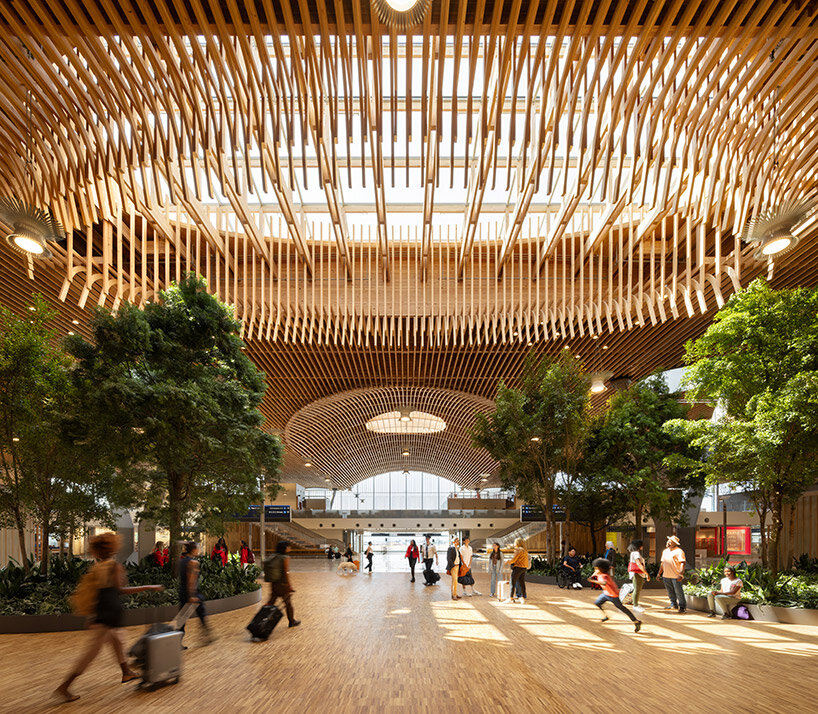 image © Ema Peter Photography
image © Ema Peter Photography
Supporting Local Economies and Forestry Practices
Sustainability was a key focus in the terminal’s design. By reusing much of the existing infrastructure and optimizing the use of wood, steel, and concrete, the project achieved a seventy percent reduction in embodied carbon compared to building a new terminal. The terminal’s highly efficient envelope and all-electric ground-source heat pump system contribute to a fifty percent reduction in energy use per square foot. Designed to withstand a 9.0 magnitude earthquake, the roof is supported by Y-shaped columns with seismic isolation bearings, allowing for lateral movement during a seismic event.
The wood sourcing strategy for the terminal was designed to support local economies and promote sustainable forestry practices. Nearly all of the wood for the glulam beams and lattice was sourced from forests managed to ensure strong ecological outcomes. Through direct sourcing approaches, over one million board feet of the wood can be traced back to its forest of origin, allowing the project to tell the story of the wood’s ecological impact and community benefits.
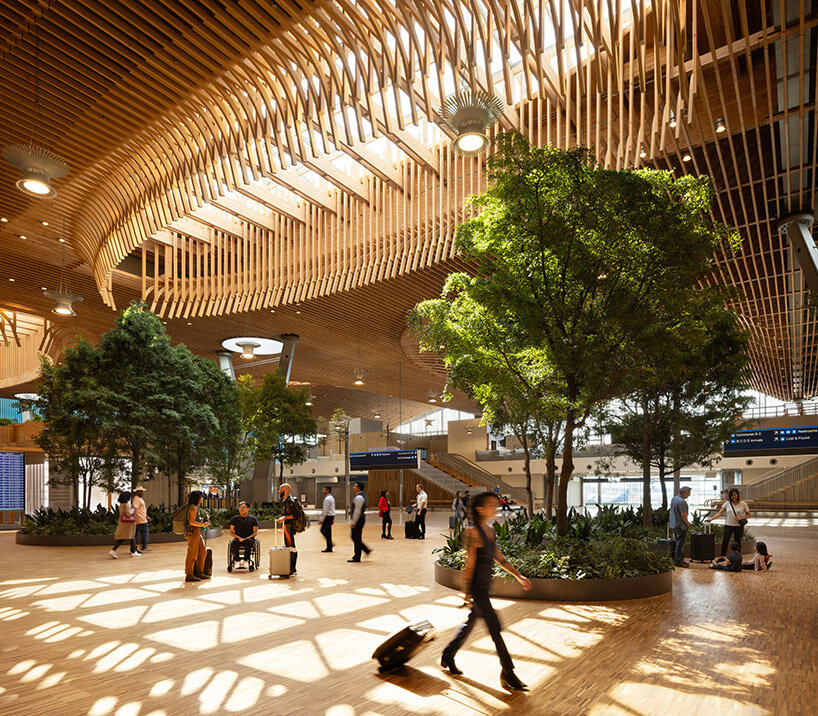 image © Ema Peter Photography
image © Ema Peter Photography
Instead of constructing an entirely new terminal, the Port of Portland and ZGF opted for a phased renovation and expansion. This approach allowed the airport to remain fully operational throughout the five-year construction period. The prefabricated wood roof, which spans the expanded lobby, check-in, and security areas, played a crucial role in minimizing disruptions. This strategy not only saved time and costs but also reduced the carbon footprint of the project.
The expansion of Portland International Airport’s main terminal is not just a response to the current demands of air travel but a forward-looking project that sets a new standard for airport design. With a second phase of the project already underway, set to be completed in early 2026, the terminal will continue to evolve, offering additional retail and dining amenities that further enhance the traveler experience.
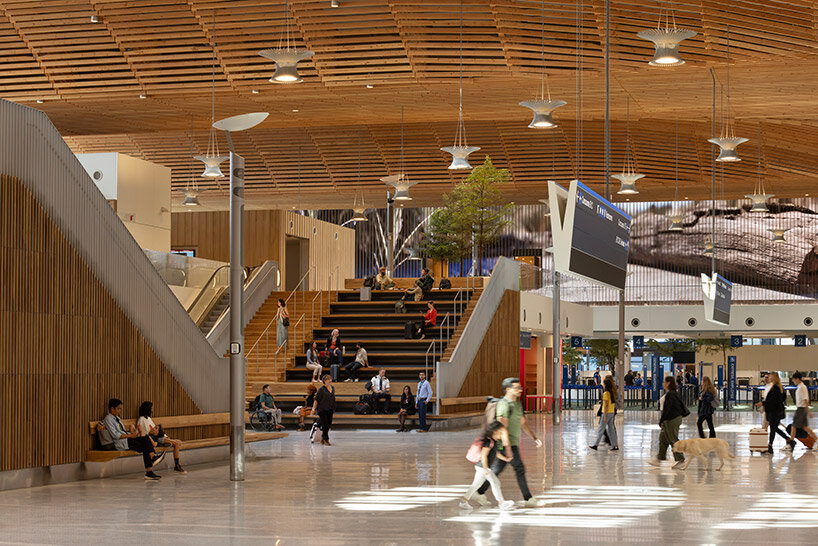 image © Ema Peter Photography
image © Ema Peter Photography
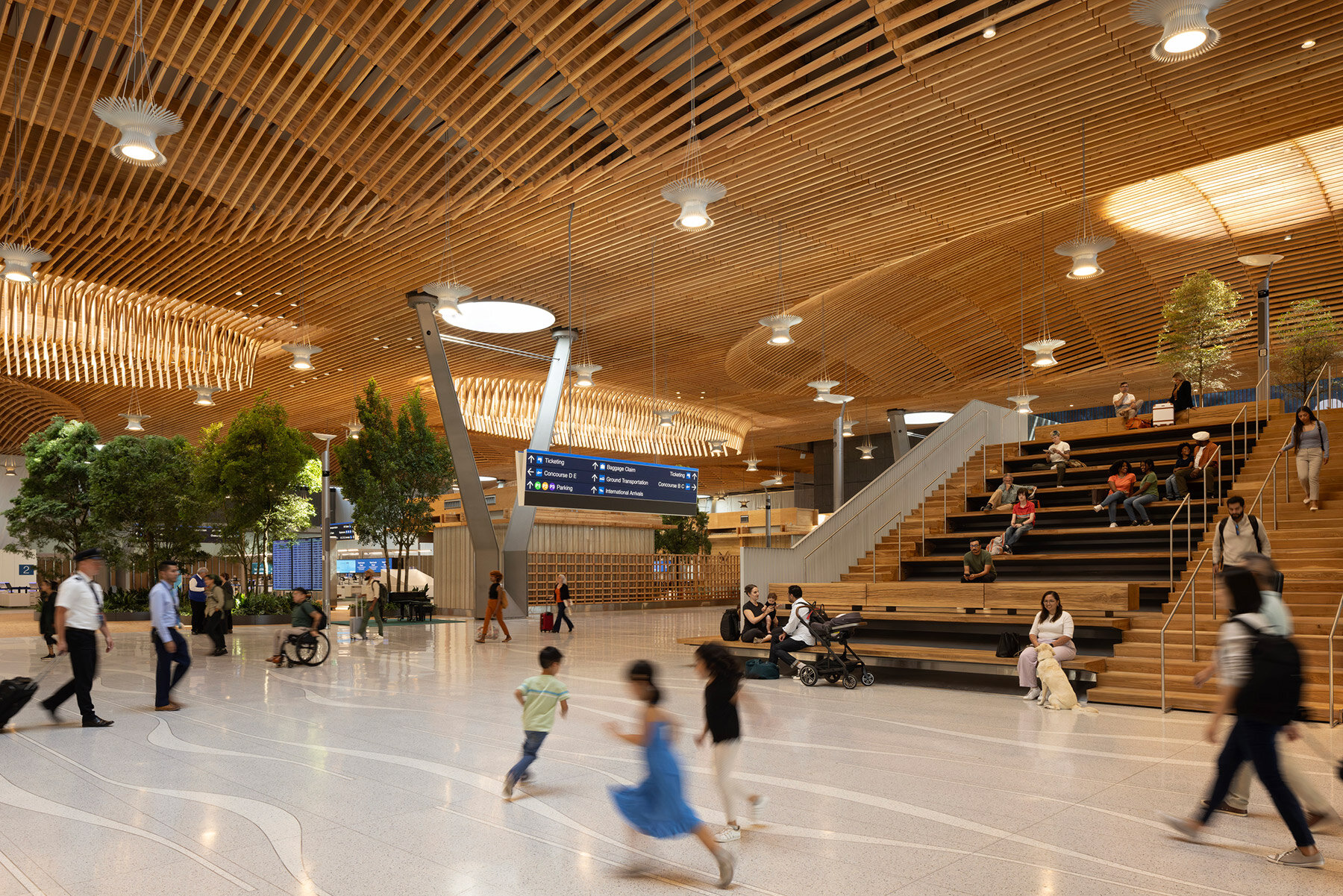
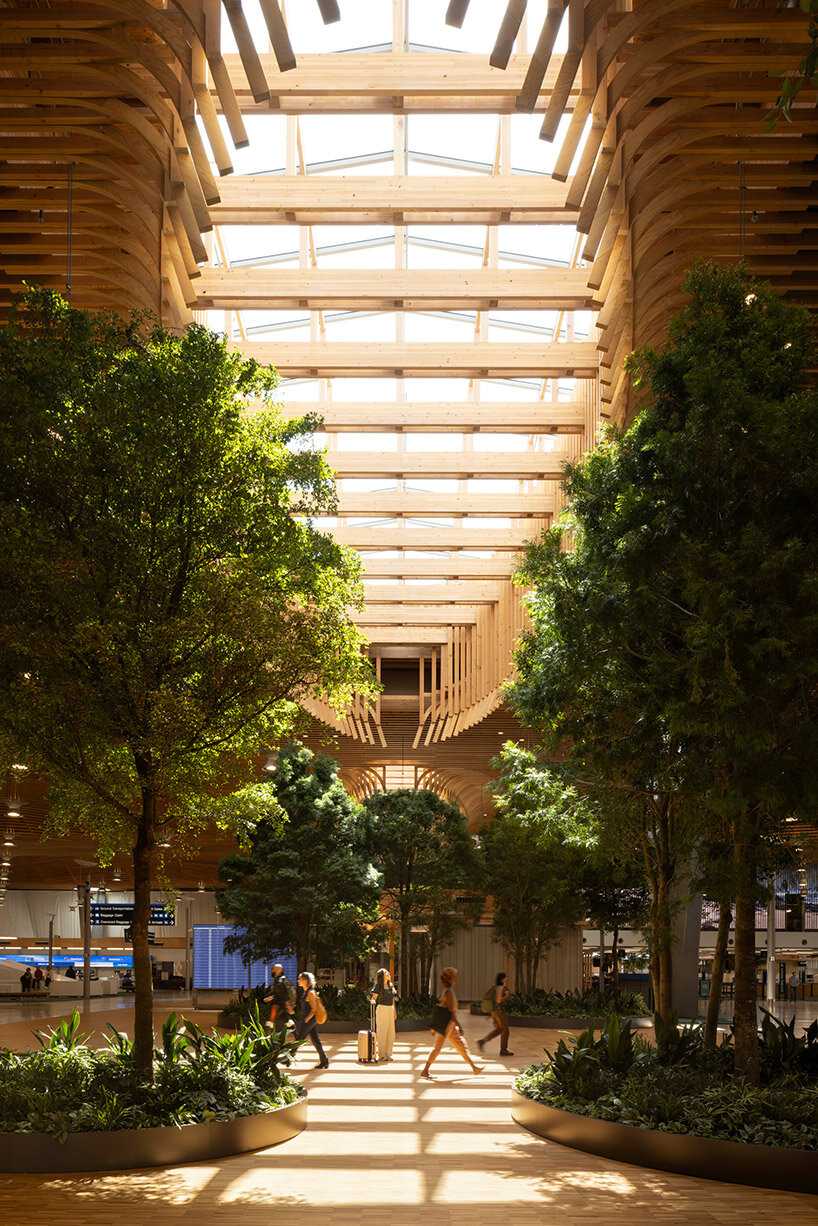 image © Ema Peter Photography
image © Ema Peter Photography